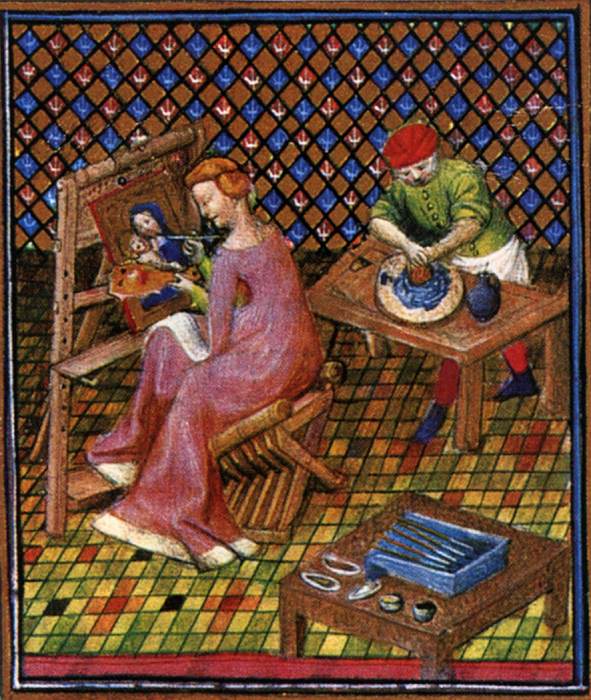Review
According to sources, Timarete despised the duties of women and practiced her father's art. She is known for a panel painting of the goddess Artemis that was kept in Ephesus. She painted with wax and tempera on wood, using the encaustic technique. She is one of the few artists whose name we know, thanks to Pliny the Elder.
Activities
-
4 in one
[en]
[es]
[cat]
- Spain > Classical culture > 3rd ESO > Continuity of cultural heritage. Mythology and religion
-
A new vision
[en]
[es]
[cat]
- Spain > Classical culture > 3rd ESO > Continuity of cultural heritage. Literature, art and science
-
Who is who
[en]
[es]
[cat]
- Spain > Classical culture > 3rd ESO > Continuity of cultural heritage. Mythology and religion
Justifications
- Painter of ancient Greece, one of the few known female artists of antiquity
- She painted with wax and tempera on wood (encaustic painting).
- Her work was part of the temple of Artemis in Ephesus for many years.
Biography
All the biographical data of Timarete that are known today are given by the references that other authors have made throughout history. It is thanks to them that her name has come down to us, one of the few we know of women artists in ancient Greece.
She was possibly born in Athens during the 5th century BC, and she was the daughter of Mycon of Athens, a painter and sculptor of some works related to the ancient Olympic Games.
Some sources place the date of her birth around the year 420 BC. This date roughly coincides with the statements of Giovanni Boccaccio in his work De mulieribus claris and Christine de Pisan in The Book of the City of Ladies, who places her birth around the ninetieth Olympiad. They also claim that Timarete abandoned "the common occupations of women" to dedicate herself to her father's art. Her great popularity caused the Ephesians to ask her to make a panel painting with the effigy of the goddess Artemis.
It seems that she completed the painting during the reign of Archelaus I of Macedonia, although nothing is actually said about the period or her stay in the city of Ephesus.
Works
Panel painting representing the goddess Artemis (not extant)
Bibliography
- Bocaccio, Giovanni. De mulieribus claris. Trad. Díaz-Corralejo,Violeta (2001), Cuadernos de Filología italiana, (retrieved on11/05/2021). <https://www.researchgate.net/publication/27571003_La_traduccion_castellana_del_De_mulieribus_claris>
- De Pisan, Christine (2013) La ciudad de las Damas. Madrid: Siruela.
- Plinio el Viejo, Naturalis Historia, XXXV, 34, 40, (retrieved on 11/05/2021), <https://la.wikisource.org/wiki/Naturalis_Historia/Liber_XXXV >
- Wikipedia, De mulieribus Claris, (retrieved on 11/05/2021), <https://es.wikipedia.org/wiki/De_mulieribus_claris#Mujeres_famosas>
Didactic approach
-Classical Culture: Mythology and religion block; Literature, art and science block.
-Plastic and visual education, referring to the types of graphic-plastic supports.
-History of Art 2nd Baccalaureate, referring to Greek art.
Documents
